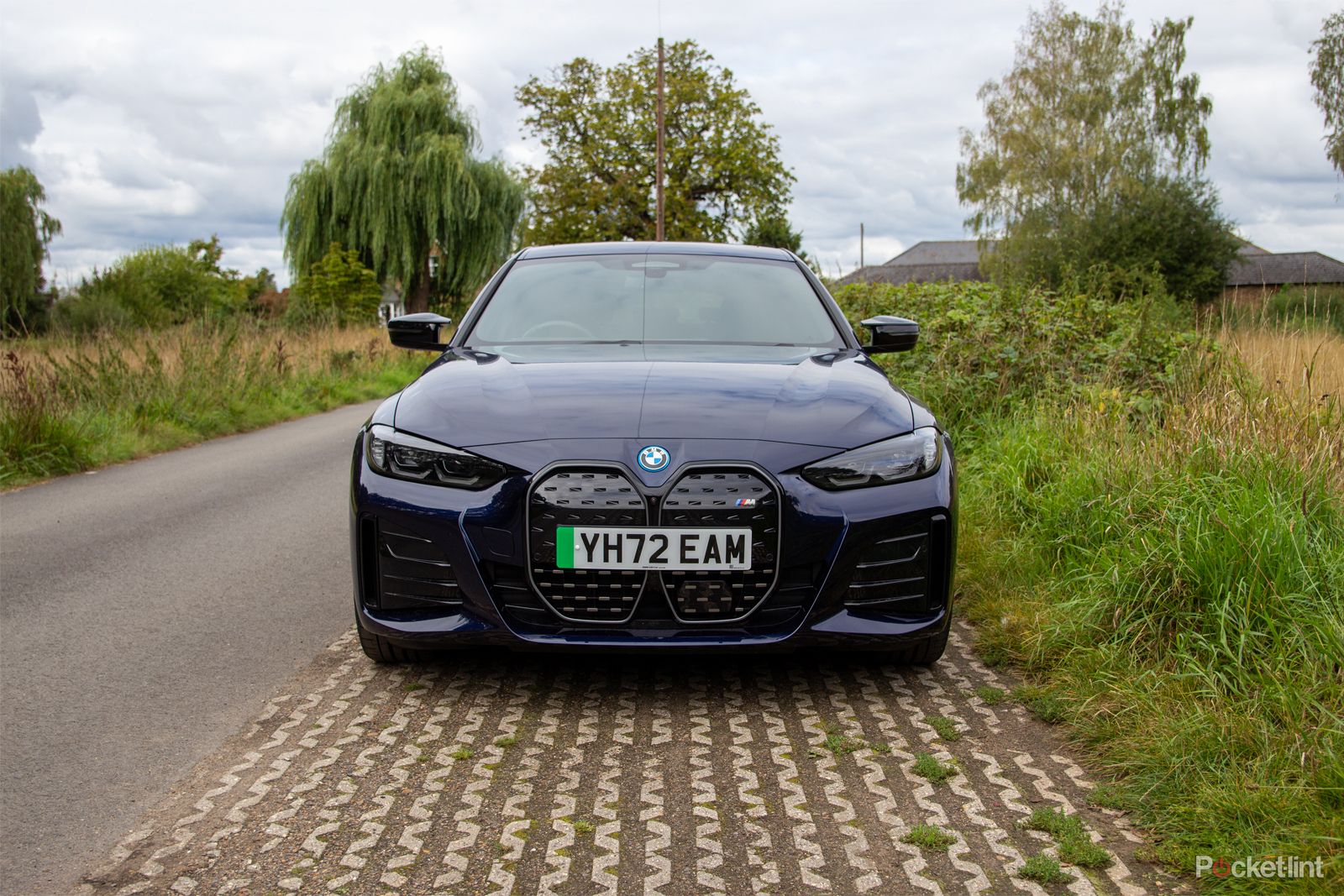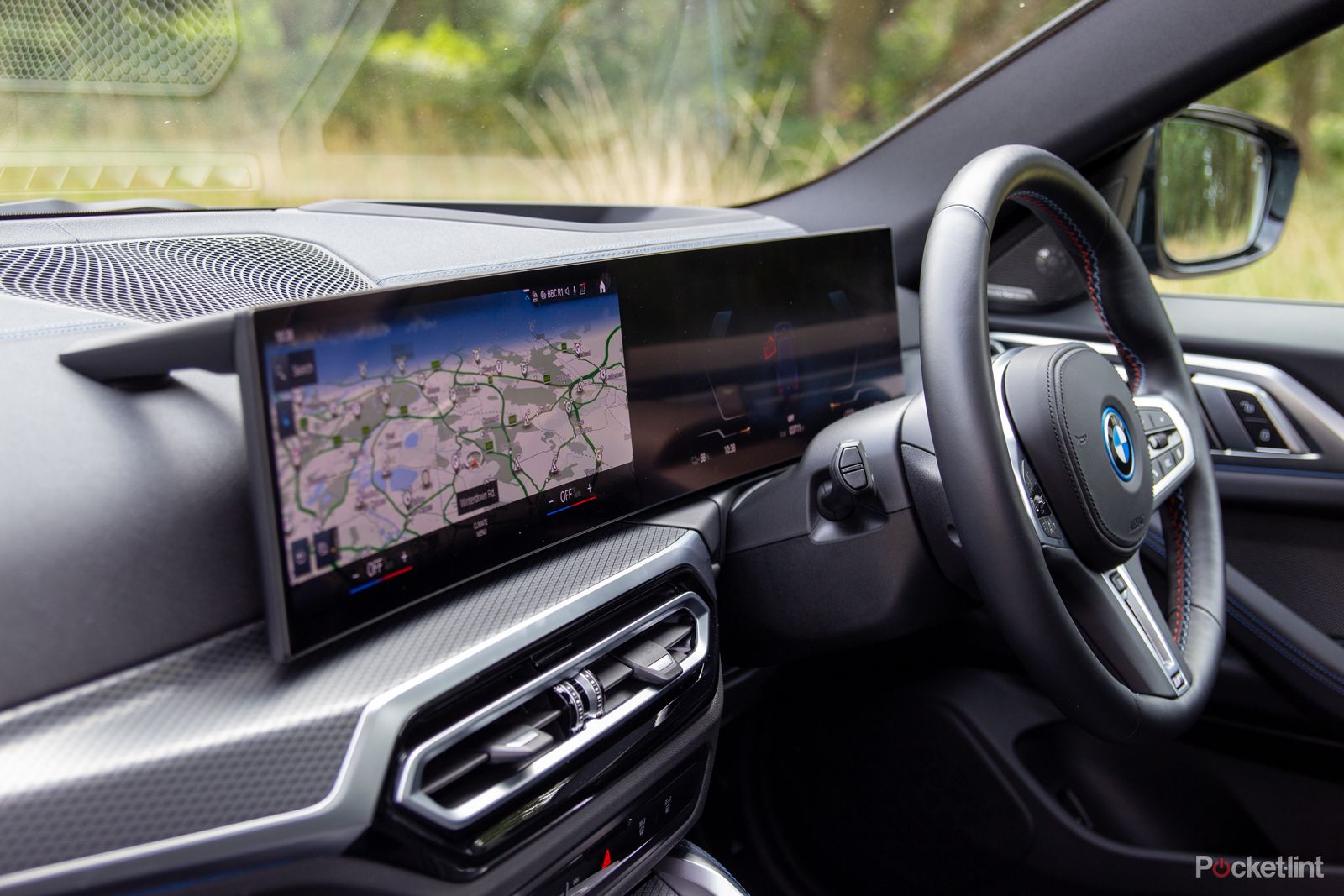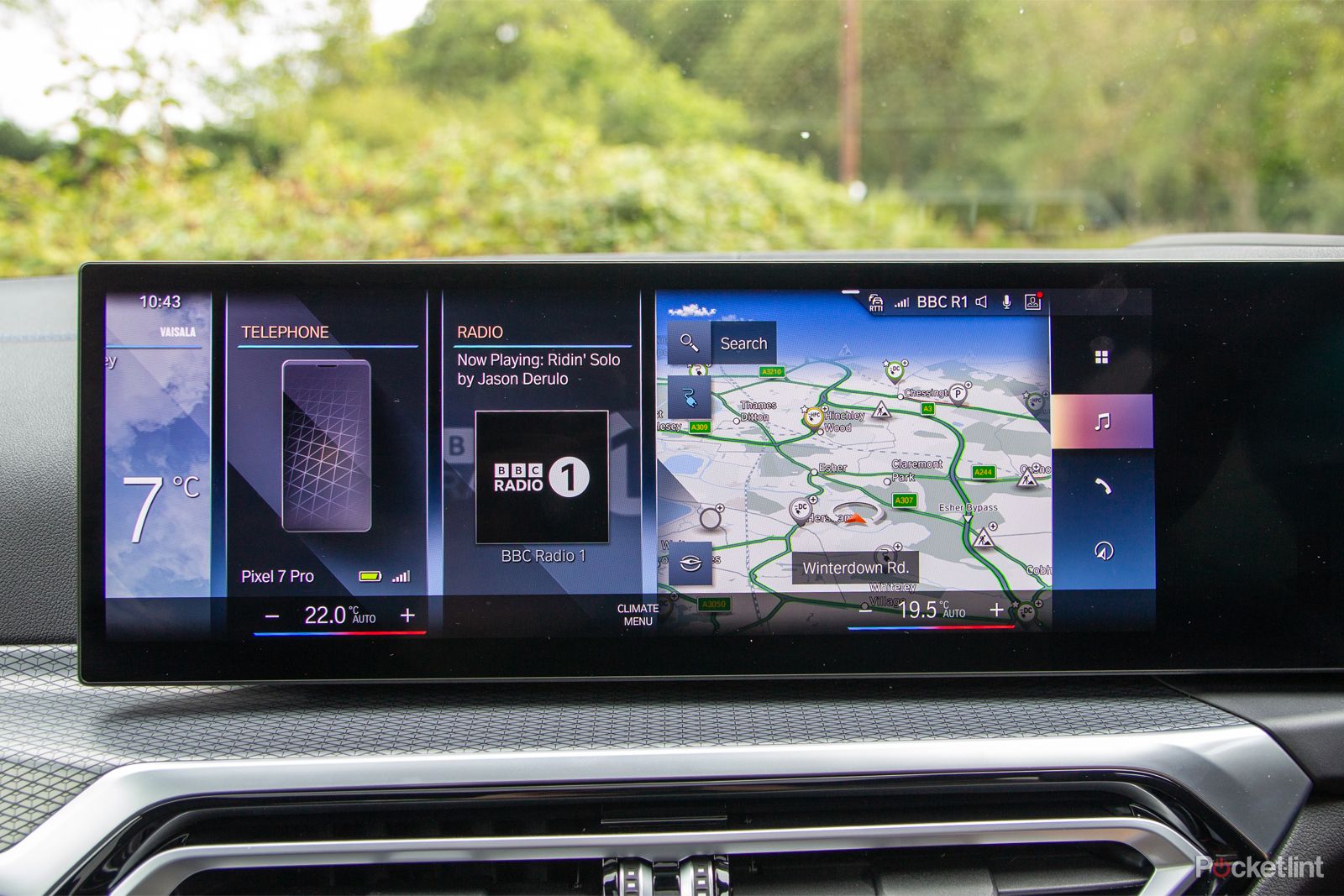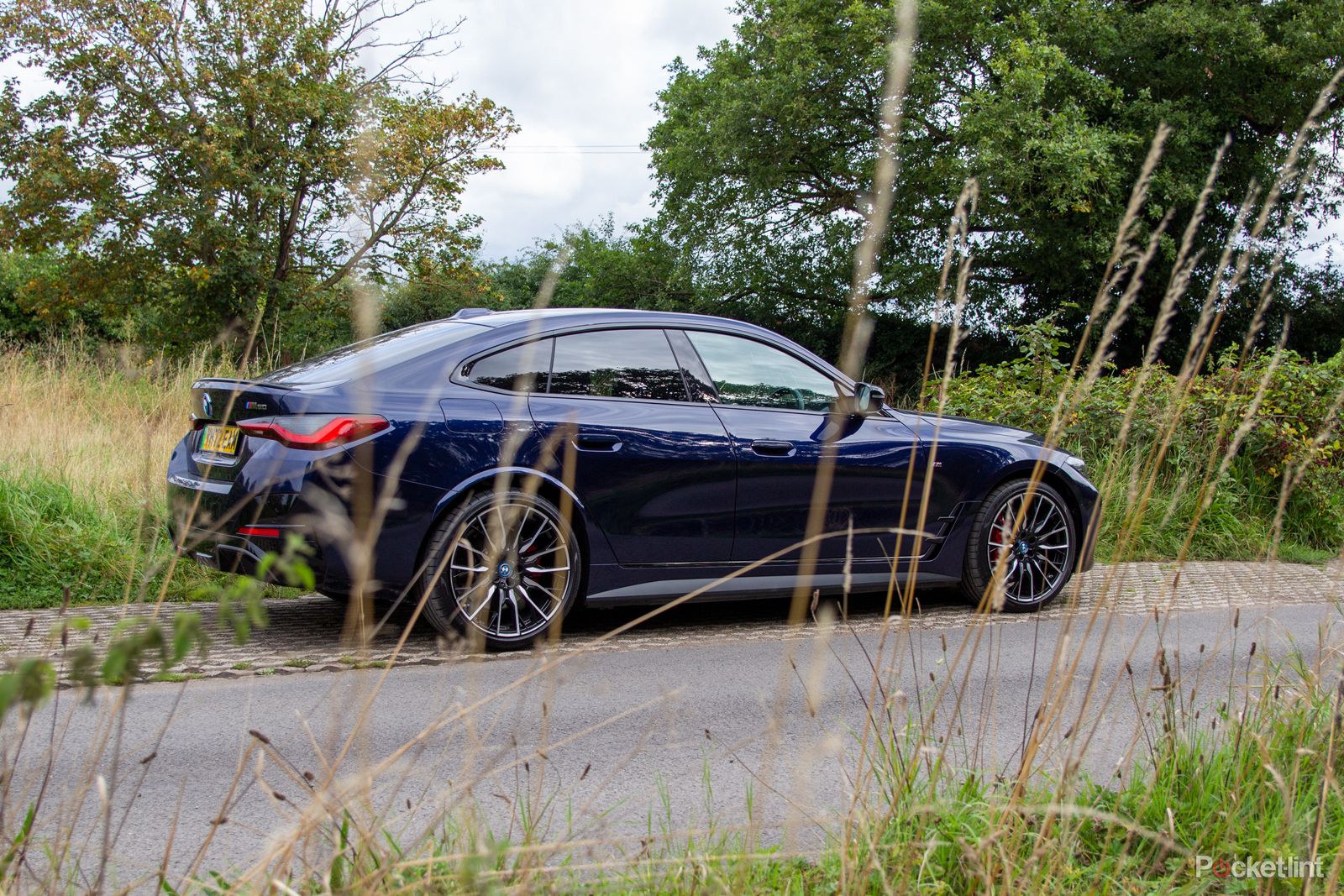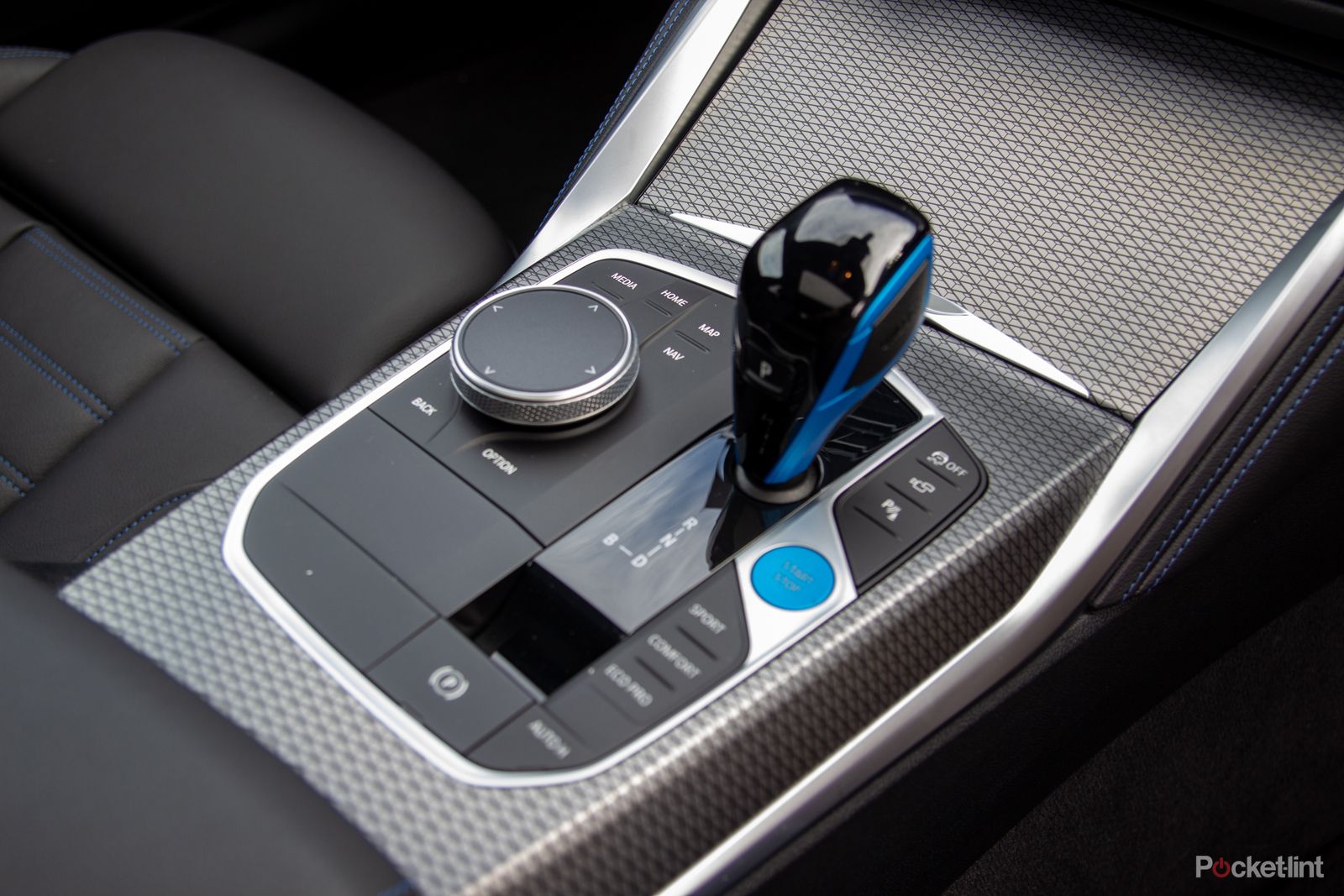The arc of BMW’s electric car releases has been a little less conventional than some, thanks to the early launch of the BMW i3. The carbon-framed bubble was one of the first mainstream electric cars to launch from a major manufacturer and it was as much a vision of future design as it was a statement of intent for BMW.
A unique, bespoke, electric car was followed by a model that was an adaptation in the BMW iX3, followed by the BMW iX, which was again designed to be electric. For some that might be a confusing picture – is the future of BMW about a new approach to car design – as evidenced in the BMW i3 and iX – or is it about taking BMW fans forward through adaptations to existing models?
That brings us to the BWM i4, which is distinctly on the latter side of the equation, as this is about as BMW as BMW gets.
2022 BMW i4
The BMW i4 demonstrates that BMW can take its winning saloon formula and turn it electric. This is as BMW as it gets and anyone who has been behind the wheel of a recent Beemer will feel immediately comfortable – and that extends to the drive and handling too. The range is a bit of a concern on the M50 model, so you might find that taking the reassuring quality of the eDrive is a compromise you’re happy to make.
- Dripping in BMW quality
- The best EV soundtrack you’ll find
- It’s a great car to drive
- The range of the M50 is perhaps lacking
- It’s expensive
An electric BMW 4 Series Gran Coupé
The BMW i4 launched before the BMW i7, but both follow the same path of electrifying BMW’s core saloon offering. This is the segment of the market that BMW has dominated and is best known for, but what’s interesting is BMW’s decision to electrify the BMW 4 Series before the larger 5 Series (which follows in 2023) or the BMW 3 Series (which will evolve out of the Neue Klasse in 2026). The 3 Series, of course, is the car that personifies BMW, but the 4 Series Gran Coupé, has always been closely related – which perhaps explains why BMW went for this model as one of its first all-electric cars.
To look at, there’s nothing to identify this as an electric model. Sure, the kidney grille is enclosed, but it’s no less prominent, while there’s blue trim in places that gives it away as an electrified model. The model on test here is the M50, so there’s M styling inside and out, again pulling this closer to BMW’s core performance saloon offerings.
This is a slightly different approach to German rivals Mercedes, where the EQE looks different to the E Class and Audi … well, we’re still waiting to see an electric saloon from Ingolstadt. There’s immediate appeal in having a BMW that looks like a BMW, especially in this executive saloon market – it’s the same but different, the same but better in many regards – accepting the loss of pure range when it comes to long motorway drives.
In some ways you could say that the i4 a safe car for BMW, because it hasn’t strayed too far from a well-trodden path. But I think it looks fantastic, it has the style and charisma that you expect from a BMW, a seriousness that reflects experience and competence. There aren’t too many electric saloons on the market yet, but BMW has really set out its stall with the i4.
Accessibility to the rear 470 litre storage is excellent thanks to the huge tailgate that lifts to give complete access. Dressed in 20-inch wheels, the Tanzanite Blue of my test model has a wonderful depth to its colour, but with that long bonnet and frameless windows, it’s a devilishly good-looking car. Is it a radical vision of the future of electric motoring? No, it isn’t, but I’m happy to forgive that, because cars like this are important to convince people that going electric can be as comfortable and familiar as that combustion car you’re moving out of.
The interior story continues
Slip into the interior and it’s the same story as the exterior. You wouldn’t know that you’re in an electric model, because everything looks and feels like a combustion BMW. The drive selector, the layout, the feel of the cabin is the same. Where some cars are opening up the centre of the vehicle, flattening the floor and opening up foot space, the BMW i4 doesn’t do that. Some might say it’s a little too like its forebears, but if your aim is to convince drivers that going electric doesn’t mean massive change, then mission accomplished.
In one sense the interior is conservative. There’s nothing that really pushes design; it escapes the slightly ornamental approach that you’ll find in the BMW i7, and it’s not too minimalist either. Buttons for iDrive reflect those found in BMWs from the turn of the previous decade, with the biggest interior change here being the move to a single curving display section housing both the central and driver display panels.
For anyone who has driven a BMW before, that makes it incredibly easy to move into. Everything is where it should be, there’s no hunting in menus to find things that should be front and centre. While anyone sitting in a Tesla Model S might say that it’s cluttered and that there are too many buttons, there are a lot of people who would disagree.
The quality of the interior comes through, of course, and with this being the M50 model, there are additional embellishments, like the red and blue stitching through the cabin, similar colour detailing on the seat belts and in the piping on the sports seats. The BWM i4 is seriously comfortable and there’s no shortage of knee and head space for rear passengers – or indeed for those in the front.
Loaded with tech
Running BMW Operating System 8, the single curved display in the BMW i4 is the same arrangement as you’ll find in the BMW iX and the BWM i7, offering a 12.3-inch driver display behind the wheel and a 14.9-inch display in the centre of the car. The fusion of displays is becoming more common, with the likes of the Hyundai Ioniq 5 being one of the first to make such a move. It gives a sense of the seamless, in a model where more is supposed to be done by touch.
As I’ve said, BMW there are still a number of buttons on the interior of the i4, but the aim with Operating System 8 is to have a system that’s closer to a smartphone’s swipe and tap, rather than the hierarchical menus that typified BMW iDrive systems of the past. With that big screen you can swipe through a range of widgets, easily tapping into full-screen versions of the services that you want to use – or of course you can opt for wireless Android Auto or Apple CarPlay.
Choosing the latter is familiar, and BMW has gone further than some manufacturers to deeply integrate mapping functions from Apple Maps or Google Maps, which will also appear in the heads-up display and in the driver display – something that other brands won’t do.
I found the i4’s system to be fast and fluid enough but there’s still space for improvement to make it more intuitive and plans are afoot for Operating System 9 (and OS 8.5 has also recently launched) – so BMW definitely isn’t standing still here. There are also some great features, like a prominent icon to find a charging station when in maps, and the digital assistant – Hey BMW – is actually pretty good and returning sensible information as well as adjusting some of the car’s settings by voice.
Range, power and performance
BMW talks about the driving experience first and foremost when it comes to its cars, and nowhere moreso than in this type of performance saloon. For the regular BMW i4 the rear wheels are driven, but on the M50 model, it’s all-wheel drive, with a dual motor arrangement. The M50 offers a 400kW output (544hp), with 795Nm torque. The power comes from a 83.9kWh battery (81.1kWh net), which is common to both the regular i4 and the M50.
Logically, the lower power output of the non-M i4 means that it offers greater range – cited as from 346 miles on the i4 eDrive40 Sport – while the M50 offers greater acceleration – 0-62mph in 3.9 seconds compared to 5.6 seconds for the standard model. That sees the range of the M50 from a cited 257 miles, which isn’t so hot. If range is your primary concern, the more efficient eDrive40 would be worth a look – and it’s a healthy chunk cheaper too.
Sticking to the range for a moment longer, BMW cites from 2.8 miles per kWh on the M50, but 2.8 miles per kWh was the highest average I could achieve in careful driving – with the long-term average for the car much lower. That suggests that previous journalists testing the car are probably enjoying that acceleration more than they are chasing absolute range, but it needs to be factored in: for all the fun the M50 delivers, it’s the absolute range that suffers as a result and somewhere around 250 miles is an accurate reflection of what you’ll get from this car with careful driving. It’s worth noting, however, that the i4 M50 will charge at rates up to 205kW, which would get you from 10-80 per cent in around 30 minutes.
The drive modes sit in buttons next to the shifter: this arrangement is preferable to many alternatives that want you to use a toggle or the touchscreen menu – if you want Sport, you just poke the button and you’ve got it. Boosting the experience is BMW’s soundtrack. I’ve sometimes been a little negative about the sounds in electric cars, but I make an exception here. In the BWM i4 M50, when you put your foot to the floor in Sport mode, that Hans Zimmer-composed audio track really brings the experience to life. Demonstrating this to family, it was met with universal appreciation; it’s electric audio done right.
What’s perhaps most impressive about the BMW i4 M50 is how well it drives. That low centre of gravity, all wheel traction and plenty of power leads to a car that hugs the road, turning in fast and powering out of corners. It’s smooth, controlled and quiet on broken roads, and refined on motorway journeys, where there’s a sense of tranquility from the sophisticated interior when at cruising speeds.
In essence, it’s about as BMW as you could get. Aside from the change to the soundtrack there’s little that says this is an electric car. Sure, there’s amazing acceleration, but you’d get that from an M car anyway. What better way to encourage BMW fans to move on from combustion, than giving them exactly what they’re used to?
Verdict
The quality and refinement of the BMW i4 comes through, enhanced by the M50 designation on this test model, offering an enthralling drive. While that M50 version adds power and all-wheel drive, with blistering acceleration, the efficiency of the rear-wheel drive eDrive models might be more appealing to keep the price in check and to get the most of the range. Whichever model you choose, you’re buying to a car that pulls on BMW’s long heritage of saloon cars. It’s a lovely place to be, reassuring to drive, sophisticated in its tech offering and it looks great too. This is a car for the BMW fans, for doubters of the move to electric, for those road warriors who value comfort on the go. What it isn’t is a vision of the future; if conventionality is what you value, the BMW i4 puts a big tick in that box.
Trending Products

